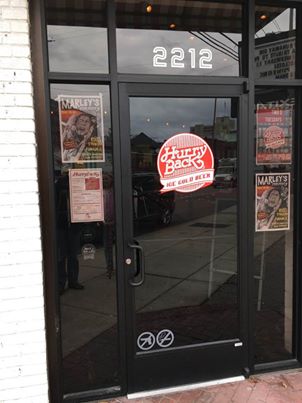Another Blank Page, Another New Season
A struggling gardener considers what writing shares with cultivating the soil
“I’m trying to be intelligent about this,” my mother says. “Not morbid.”
She’s talking about what she and my father have taken to calling “this place”: their home and the fifty-two acres of land where it stands. She is telling me how they have again been discussing what might happen to it when they are no longer able to take on the formidable task of keeping it up.
“I know,” I say, my voice catching. This is so not the reaction I want my mother to hear. Can she detect it? Of course she can. She’s my mother. And I have spent my entire adult life trying to ready myself for just this kind of conversation, only to grow more and more sure that I will never be ready.
This place—how to capture everything it is and has been and might be in a one pithy sentence or two? Horticultural artwork, destination of garden clubs and magazine editors, site of five weddings including my own. Home to upwards of forty Japanese maple cultivars; burial ground for at least six family pets. My parents call it Gum Tree Farm, a name they introduced when they began operating a small plant nursery there, more than fifteen years ago. They had a good run but decided to call it quits a few years back. Now all the nursery stock is gone; ceased too are the biannual plant sales that drew landscapers and backyard horticulturists alike.
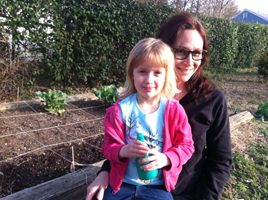 But everything that set the stage for the nursery is still there, along with much that it begat. The Metasequoias and bald cypress, the heirloom peonies and poppies and roses. A herd of pygmy goats that once took down, with astonishingly effective nibbling, a formidable honeysuckle thicket, clearing a space that became a shade garden full of trillium and ferns and hostas and hellebores. (The goats, brought on as labor, attained pet status; few if any of the original herd remain, but the presence of goats at Gum Tree Farm was established, and now the pygmies are the pampered recipients of carrots from my small daughter’s hand.) The long rows of ornamental grasses that sway and shimmer in the wind; the magnificent star magnolia and several Chionanthus virginicus (my mother’s favorite tree), and dogwoods with giant blooms. A vegetable garden that last year became the playground of four chickens. My parents’ gardens, like any gardens, are ever-evolving, shape-shifting according to their creators’ designs and the graces and furies of Mother Nature.
But everything that set the stage for the nursery is still there, along with much that it begat. The Metasequoias and bald cypress, the heirloom peonies and poppies and roses. A herd of pygmy goats that once took down, with astonishingly effective nibbling, a formidable honeysuckle thicket, clearing a space that became a shade garden full of trillium and ferns and hostas and hellebores. (The goats, brought on as labor, attained pet status; few if any of the original herd remain, but the presence of goats at Gum Tree Farm was established, and now the pygmies are the pampered recipients of carrots from my small daughter’s hand.) The long rows of ornamental grasses that sway and shimmer in the wind; the magnificent star magnolia and several Chionanthus virginicus (my mother’s favorite tree), and dogwoods with giant blooms. A vegetable garden that last year became the playground of four chickens. My parents’ gardens, like any gardens, are ever-evolving, shape-shifting according to their creators’ designs and the graces and furies of Mother Nature.
What it all adds up to is labor of love and passion—lots of labor. “Gardening is hard work,” my mother likes to remind me when yet another thing I’ve plopped into the ground has failed to thrive.
But right now she’s telling me that sometime soon we need to have a conversation, “over dinner and wine,” about what will become of this place. She’s telling me that my brother and I need to come over and go through the contents of the house, piece by piece, deciding who wants what. She was left to sort through the stuff of her childhood home on her own, with no help from her brother. “I don’t want that for y’all,” she says. “I mean, I don’t think either of you would want to live here,” she says.
I don’t contradict her. Coming back home, I mean really home, had never presented itself to me as an option. To live one day in the same house where I grew up, to come full circle quite like that: not part of my plan. Who ends up settling down in their childhood homes these days? It seems a trajectory of a bygone era—or, perhaps, of a certain kind of failure.
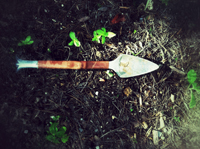 But my vision of the future has always been blurry at best. I have never been well-enough acquainted with the five-year plan, much less the long view. What there has always been, and always will be, is writing: the making of stories and novels. A vision more characterized by hope than steps on a flowchart, measurable goals.
But my vision of the future has always been blurry at best. I have never been well-enough acquainted with the five-year plan, much less the long view. What there has always been, and always will be, is writing: the making of stories and novels. A vision more characterized by hope than steps on a flowchart, measurable goals.
Thinking now of the massive challenge involved in keeping up their place, of maintaining even a semblance of the cultivated glory that exists now, I see what my mother perhaps sees: a risky proposition, at worst an opportunity to fail, at best a dream more than a pragmatic reality. And yet a dream does take hold. Has already taken hold, in fact, long before this conversation.
It is a dream that scares me, not unlike the commitment to a writing life has scared me. It scares me because I want it to grow strong, abundant, real. Because I am afraid I will not nurture it as I should.
I return from a jog on the first warm, humid morning of what has been a remarkably cool Tennessee spring, my ponytail a thick wet rope. I never thought I’d call myself a runner, but my regular 3 and 4-milers have become a form of therapy and creative process, all in one—my mind bouncing from stories in progress to any number of stresses; today, I even cried a tiny bit. Which was a first. (I’m not crying, I thought.
Stooped beside the flowerbed we’ve carved out of the grassy median that runs down our street, I take survey of barely-off-the-ground zinnias and purple Salvia splendens, both started from seed by my mother, who passed them along to me when they were of sufficient age. Not much happening here yet. The zinnias are tiny but stalwart; they appear to be gaining millimeters of height. But the five little salvias haven’t budged since I put them in, though a few have sprouted premature stabs at blossoms. I have done everything I can think to do. I think: Grow, you little bitches.
Immediately, I regret it. Now the plants are surely absorbing my negative energy and will reward me in kind. They’ll cower, wither, brown. I send out a better vibe—Grow, sweeties. You can do it! Feel that sun on your backs? Thaaaat’s it!—and the next time I talk to my mother, I report on the feckless salvia.
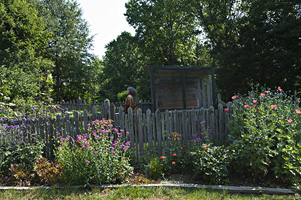 “It’s just not hot enough,” she says breezily. “They need heat.”
“It’s just not hot enough,” she says breezily. “They need heat.”
This diagnosis frustrates me even if it absolves me of blame. I want expert counsel, a tidy solution—something I can spray or sprinkle on the little buggers and put an end to this do-nothing phase. At the same time, I hope she’s right. It’s not me, it’s them.
But I’m haunted by a murderous legacy. My parents have offered me the responsibility of many plants over the years. Some I’ve managed to nurture, but too many have perished under my watch. There was the cutting of the purple heirloom rose that Mom spoke so highly of: I left it in its black plastic pot on the back steps, where it survived much longer than it had any business. I’d pass it by and think, son of a gun, it’s still alive—I must get it in the ground. But my attentions were elsewhere. I never found the time, and the rose eventually gave up. I don’t remember pitching it in the trash, but I must have. We weren’t composting back then.
What else? Tales of noble effort, clumsy nurture, bald neglect. A maidenhair fern, coaxed through a brutal summer and then neglected just long enough in August’s torpor to send it on a slow, irreversible course toward death come fall. Tomatoes with blossom-end rot and squash with aphids. A little fingerlike succulent, over- and then under-watered, which lost a bunch of its fingers and has for the past six months existed in a state that seems less like living than an airless pause between life and death. Then there were the Spanish bluebells, divided by my dad at their place and brought to me in a pickle bucket. “Plant them now,” he said, “they’ll be beautiful in the spring.”
That bucket sat on our front porch for weeks, collecting rainwater. In it stewed a fetid soup of bulb, leaf, and who knows what-all unfortunate insect life. Disgusted, I finally poured the whole nauseating lot out into the mulch beneath our front hedges and figured that was the end of that. But incredibly, the bluebells rose anyway this spring, blooming in one lovely mass.
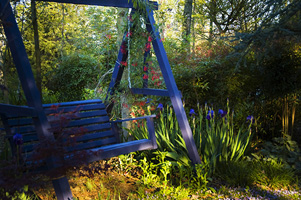 Cataloging failure is something at which I excel—taking stock of the false starts and abandoned projects, the mistakes and slips and poor performances; the occasions on which I’ve failed to meet my own expectations and ideals as a writer, daughter, mother, friend, wife. I can talk you sober on my own shortcomings: as a sower of seeds, rememberer of birthdays, maker of small-talk, flosser of teeth. And so I confess: I have watched these and other plants suffer (or so I imagine), thought about trying to save them, made some puny, or panicky, late-game effort at rehab, watched those desperate measures accomplish nothing, felt hamstrung by futility—No matter what I do, this blasted thing wants to die—and then ignored them until they were obviously, irrevocably gone.
Cataloging failure is something at which I excel—taking stock of the false starts and abandoned projects, the mistakes and slips and poor performances; the occasions on which I’ve failed to meet my own expectations and ideals as a writer, daughter, mother, friend, wife. I can talk you sober on my own shortcomings: as a sower of seeds, rememberer of birthdays, maker of small-talk, flosser of teeth. And so I confess: I have watched these and other plants suffer (or so I imagine), thought about trying to save them, made some puny, or panicky, late-game effort at rehab, watched those desperate measures accomplish nothing, felt hamstrung by futility—No matter what I do, this blasted thing wants to die—and then ignored them until they were obviously, irrevocably gone.
But I keep beginning again, shelling out for seeds and starter plants, bringing home freebies from my parents’ place, digging holes and tamping down dirt and watering in. Every planting season I’m filled with a renewed sense of dedication to the hard work that making things grow requires, each year more determined to sustain this momentum into summer and fall. (My mother in my ear: Everyone gets excited about gardening come spring. But it’s what you do in late summer and fall that makes you a real gardener.)
Of late—salvias be damned—I’m buoyed by signs of success: the shade garden we put in two autumns ago is lush this spring, all its plants seemingly twice the size they were this time last year. For weeks we’ve been supping on salads made from four extremely productive buttercrunch lettuce plants, their wide, lemony-green leaves beautiful and tasty proof of accomplishment. Trees planted shortly after we moved into our house three summers ago have lately embarked on some kind of growth sprint, barely recognizable with all their new limbs and foliage. (Not that I can claim to have had much to do with the latter. “Crawl the first year, walk the second, run the third,” goes my mom’s mantra on plant growth.) I have become more vigilant with the watering can and a good deal more skilled in the highly scientific “Is it thirsty?” test: a finger in the top two inches of the potting mix. Dry? Water. Moist? Leave it be. As for feeding, well, fertilizer and I are still getting to know one another, but gone are the days when I murdered a planter full of seedlings by dousing them with an entire bottle of undiluted worm juice.
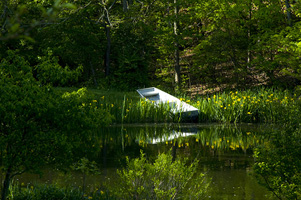 Without giving much thought to it, really, I have always kept gardening in a mental space separate from my “serious” creative pursuits—writing, mainly. Any success I’ve had in fostering plant life I’ve enjoyed merely as a sweet quirk rather than the payoff of diligent work. When, lo and behold, something would sprout a bloom, I’d see Mother Nature’s beneficence more than proof of my own careful stewardship.
Without giving much thought to it, really, I have always kept gardening in a mental space separate from my “serious” creative pursuits—writing, mainly. Any success I’ve had in fostering plant life I’ve enjoyed merely as a sweet quirk rather than the payoff of diligent work. When, lo and behold, something would sprout a bloom, I’d see Mother Nature’s beneficence more than proof of my own careful stewardship.
But what I’m noticing lately are the many ways in which gardening harmonizes with writing—and what pleasure it is to listen in. Getting things to grow, like writing and most creative acts, has a whole lot more to do with a commitment to the practice than it does with innate talent—a green thumb or instinctually gorgeous voice. You can school yourself silly on craft, but writing only becomes better in the development of a sort of mental muscle memory that comes from repetition, from days and months and years of doing and doing-over and over again. And what is gardening if not a continual process of revision, of building upon what has come before, season to season, year to year?
Likewise, you can chip away at gardening in brief productive bursts, as long as they occur with regularity and with keen respect for nature’s cues. Gardening is all timing, says my mother and anyone who knows anything about growing stuff. So too, writing, in a sense: you simply have to show up, on a schedule of your own design. In showing up, you train the muse to show up. And then you make sure you’re there to meet her.
I feel a kind of blithe freedom in gardening, not only for the escape it offers—its sheer, dirty, sweaty physicality a welcome departure from a screen and my butt in a chair. Working in the garden is still immune to the slow, clutching panic that for me so often accompanies the making of things out of words. Now I’m learning to let my gardening life inform my writing life, and vice versa. So what if a plant dies? There will always be a new season around the bend, another trip to the greenhouse. So what if a story hits a wall in the drafting process? You can always turn to the seedling of another—and try this one again some other time, or not. There is always next season; there is always another blank page. What matters most is that you keep at it, at the trial and error. Which is in fact my mother’s summary of her path to gardening expertise: knowledge accrued through years of trial and error. No doubt it is a history filled with more dead plants than I know. Plants that did not die in vain.
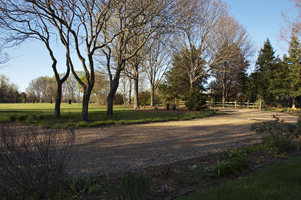 These comparisons and so many more—everywhere I look now, there they are for the picking. There is even something to be learned from the example of the cursed violets that indefatigably freckle my shade garden, even as I scrape and wrest them from the soil. The little bastards will never be fully cowed by the likes of me, never. They don’t know what quitting is. And if I left them alone for very long, you can bet they would win.
These comparisons and so many more—everywhere I look now, there they are for the picking. There is even something to be learned from the example of the cursed violets that indefatigably freckle my shade garden, even as I scrape and wrest them from the soil. The little bastards will never be fully cowed by the likes of me, never. They don’t know what quitting is. And if I left them alone for very long, you can bet they would win.
There is in me that dark tendency to see gardening as just one more thing at which to fail—a pursuit that can only result in my coming up short in the shadow of my parents’ mastery. But I can also see it as just another form of the revision process, of creative habit, one that has much to say to writing.
Summer sets in. I drive out to my parents’ place one warm, breezy afternoon to collaborate with my mother on the baking of a cake for my daughter’s fifth birthday. New life is everywhere: baby turkeys toddling across the driveway with their mama, baby bluebirds about to fledge from a box by the back door, a mallard couple waddling up through the backyard from the pond. From the kitchen window I can see my mom’s crop of zinnias, a bit taller than mine already—but not too.
So then, back to the gardens of Gum Tree Farm—my parents’ magnum opus forever in progress. What will await it when they’re no longer the masters of its narrative arc? We are sure of the villain: the developers, who have already laid claim to what was once a wide buffer zone of woodland and pasture on all sides of the land, replacing it with planned communities starting in the low 200s, pitched roofs rising uniformly above the rolling terrain like pencil tips. They would splinter the place into parcels; leave it sliced, diced, leveled off, plucked bare of trees.
Mine is a different vision entirely, one that came to me some years back and has not left me since: this place as an artists’ community, a working haven for visual artists and composers and writers alike. In exchange for their keep, perhaps, the residents clock a few hours weeding, watering, harvesting. Perhaps they help grow the food that is served at nightly dinners. I don’t know how to put such a vision into action, but I know that it has stayed with me, clear in my head, as few notions ever have. When I mentioned it to my parents, they seemed both intrigued and perplexed. It sounds nice and all, but how might such a dream realistically come to be? I like to think that someday I’ll have those answers.
But right now my salvia are still indolent. I complain of them again to my mother, and she goes to the pantry, emerges with a small jelly jar of what looks like liquid soap. Worth a try, she says. A teaspoon to a gallon of water. I hold it up to the light. Will it do the trick? Only one way to find out.
Susannah Felts will read from her work on June 4, 2013, at 7 p.m. at Fat Bottom Brewery in Nashville. She will be joined by songwriter Joshua Payne. The free event is part of the East Side Storytellin’ series, which pairs writers and musicians in performance.
